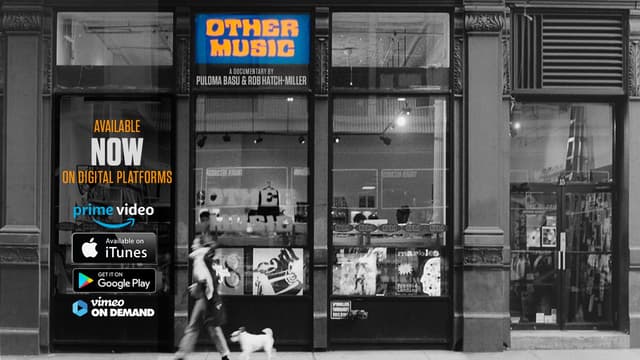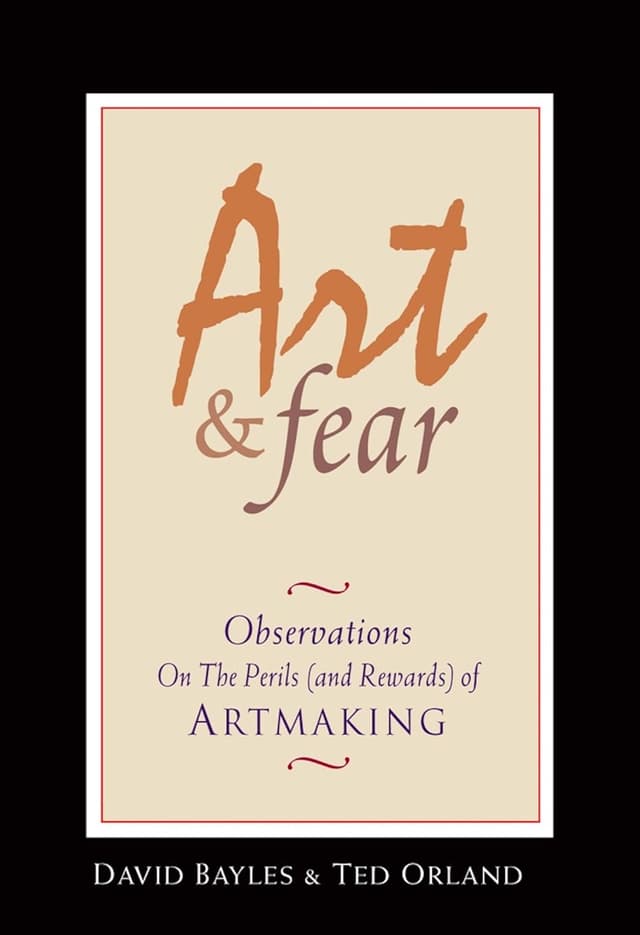Colin Nagy | September 9, 2019
Why is this interesting? - The Deleted Years Edition
On music, culture, and the ephemeral nature of the mid-2000s
Recommended Products

A documentary about the influential New York City music store Other Music, which closed in 2016 after 20 years of being a hub for indie music.

A book by David Bayles and Ted Orland exploring the way art gets made, the reasons it often doesn't get made, and the nature of the difficulties that cause so many artists to give up along the way.
Colin here. I’m part of the last generation that remembers what it was like pre-internet. And luckily, when it comes to culture and media consumption, there are some physical vestiges of that time. The soundtrack that was my first CD purchase (cough: Top Gun), along with assorted VHS tapes, cassette mixes, and probably a minidisc or two are boxed up somewhere. But for the period after that, of MP3s from Napster and iTunes, entire swaths of my musical memory has disappeared. Dave Holmes, in a recent Esquire article, calls that segment of time “The Deleted Years”.
But if you ask me to name my favorite songs from 2007, I might need to use a lifeline. The music of the mid-aughts to early-teens is largely gone, lost down a new-millennium memory hole. There is a moment that whizzed right past us with no cassettes, discs, or Shazam queries through which to remember it. These are the Deleted Years, and we need to start honoring this period, right now, before we forget it forever. The Deleted Years, by my count, ran from 2003 to 2012—give or take a year or two on either side—from the time the Apple Music Store opened to right around when we really started to use Spotify.
Why is this interesting?
I had an ambient awareness of a large gap in my musical education and history. But this swath, outlined by Holmes, definitely checks out. Some folks, like friend of WITI Rick Webb, are hugely dedicated archivists that catalog file names perfectly and also keep backup physical copies of consequential albums. But for me, thanks to that weird migration with iTunes, a few malfunctioning hard drives, and well, an element of carelessness, mid-2000s music is mostly a memory hole. Not for the large acts that I still pay attention to, but the color, shade, and nuance of the period has lost all detail. It’s things like the artists that inspired an artist or a genre wormhole I went down based on a friend’s guidance that have disappeared.
While my tastes were probably more aligned towards the Other Music customer than the Spin reader, Holmes makes a macro case for this “Deleted Years” argument in pop culture as well, even down to how the hit single sausage was made, and the morphing of the industrial complex around it:
The ways we acknowledged and celebrated hit music began to crumble around us in the Deleted Years as well. BBC countdown mainstay Top Of The Pops aired its last episode in 2006, with the indignity of its final number one being Shakira’s “Hips Don’t Lie.” Two years later—and long after MTV had abandoned music videos in favor of teen moms—Total Request Live ended its run, with its last chart-topper being Ne-Yo’s “She Got Her Own” featuring Jamie Foxx and Fabolous. (Sing it. Right now.) Rolling Stone and Q shrunk in size and page count. By 2013, Billboard had changed its chart methodology to reflect how young people were consuming music, a move whose initial impact was giving Baauer a number-one single because of all those “Harlem Shake” videos.
Part of the issue here is the surge in music consumption at this time. In the past, hard-earned money yielded hard-earned music that manifested in physical form. But in the Deleted Years, everything was accessible to download on-demand. While we could drink from the firehose, perhaps our time spent actually getting inside the nuances of an album diminished. Regardless, the loss of any music and culture is a crime, but the transition between physical and streaming, as well as purchased to leased over the airwaves, is an interesting case study in ephemeral culture. (CJN)
Map of the Day:
I’ve had an idea forever that I want to do a poll of people around the country asking where “the city” is. The notion is that if you took their zip code and their answer, you’d get a sense of the cultural area of a city, which is almost always much larger than the geographic area. Maybe I’ll do it at some point, but in the meantime, I’m always on the lookout for things that play on the same concepts. Hence my immediate appreciation of this map of the midwest which was created by polling folks in exactly the way I described and asking if they live in the midwest or not. (NRB)

Quick links:
WITI contributor Steve Bryant (The Maslow Edition) has put together an awesome Framework Guide with contributions from Anita Schillhorn van Veen (The Climate Tourism Edition), Nick Parish (The Paquete Edition), as well as Colin and myself. (NRB)
Kevin Kelly (founding editor of Wired) on Art and Fear. (CJN)
The Other Music documentary (CJN)
Thanks for reading,
Noah (NRB) & Colin (CJN)